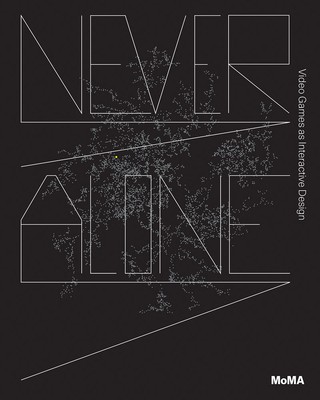
- We will send in 10–14 business days.
- Publisher: Museum of Modern Art
- ISBN-10: 1633451410
- ISBN-13: 9781633451414
- Format: 20.6 x 25.7 x 1.8 cm, minkšti viršeliai
- Language: English
- SAVE -10% with code: EXTRA
Never Alone: Video Games as Interactive Design (e-book) (used book) | bookbook.eu
Reviews
Description
An exploration of interaction design through 35 classic examples of video games, from Space Invaders to Minecraft
Our lives are increasingly lived on screens, and every one of our electronic interactions is mediated by a designed interface, which can be buggy and incomprehensible or inviting and accessible. Like other ubiquitous everyday tools, these interfaces are seldom recognized as objects of design--and even less as objects of interactive design. In video games, however, users are acutely aware of their relationship with the interface, making video games compelling examples of this important field of contemporary design.
Published in conjunction with an exhibition at the Museum of Modern Art, Never Alone: Video Games as Interactive Design explores the impact of interactive design by examining 35 video games created between 1972 and 2018--from Space Invaders (1978) and Pac-Man (1980) to The Sims (2000) and Minecraft (2011). An overarching essay by curators Paola Antonelli, Anna Burckhardt and Paul Galloway presents the pioneering criteria by which MoMA has selected these video games for its collection, as well as the protocols for their acquisition, display and conservation. The richly illustrated plate section is divided into three sections that analyze input devices (keyboards, joysticks, buttons), game designers and players, and each game is accompanied by a short text illuminating its significance in the history of the medium.
EXTRA 10 % discount with code: EXTRA
The promotion ends in 21d.04:28:11
The discount code is valid when purchasing from 10 €. Discounts do not stack.
- Publisher: Museum of Modern Art
- ISBN-10: 1633451410
- ISBN-13: 9781633451414
- Format: 20.6 x 25.7 x 1.8 cm, minkšti viršeliai
- Language: English English
An exploration of interaction design through 35 classic examples of video games, from Space Invaders to Minecraft
Our lives are increasingly lived on screens, and every one of our electronic interactions is mediated by a designed interface, which can be buggy and incomprehensible or inviting and accessible. Like other ubiquitous everyday tools, these interfaces are seldom recognized as objects of design--and even less as objects of interactive design. In video games, however, users are acutely aware of their relationship with the interface, making video games compelling examples of this important field of contemporary design.
Published in conjunction with an exhibition at the Museum of Modern Art, Never Alone: Video Games as Interactive Design explores the impact of interactive design by examining 35 video games created between 1972 and 2018--from Space Invaders (1978) and Pac-Man (1980) to The Sims (2000) and Minecraft (2011). An overarching essay by curators Paola Antonelli, Anna Burckhardt and Paul Galloway presents the pioneering criteria by which MoMA has selected these video games for its collection, as well as the protocols for their acquisition, display and conservation. The richly illustrated plate section is divided into three sections that analyze input devices (keyboards, joysticks, buttons), game designers and players, and each game is accompanied by a short text illuminating its significance in the history of the medium.


Reviews